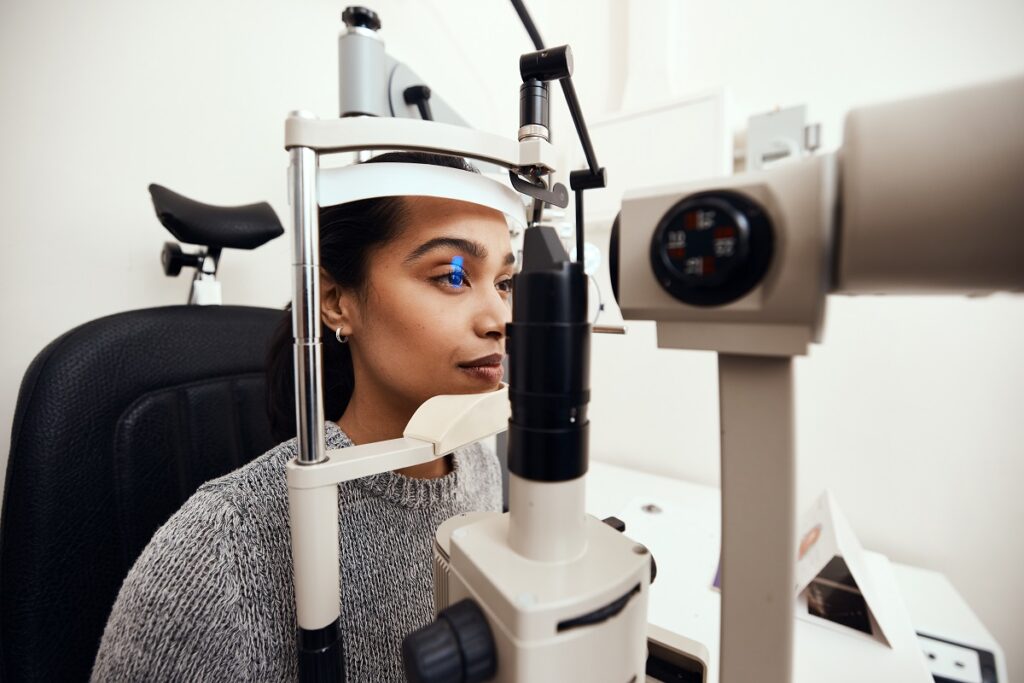Experience Personalized Treatment with Opticore Optometry in Chino
Wiki Article
Checking Out the Most Current Technical Advancements in Optometry and What They Mean for Eye Doctors
From the precision of Optical Comprehensibility Tomography to the nuanced insights provided by AI-driven analysis devices, these advancements are setting new requirements in patient analysis and treatment. As these innovations penetrate the method, optometrists are encountered with the obstacle of welcoming these tools to boost patient end results.Technologies in Diagnostic Tools
Progressing the field of optometry, developments in diagnostic devices have actually revolutionized the method eye treatment experts assess and detect eye problems and aesthetic disabilities. The past decade has actually observed significant technological improvements, making it possible for even more precise and comprehensive evaluations. Optical Comprehensibility Tomography (OCT), for instance, provides high-resolution cross-sectional photos of the retina, enabling for the very early discovery of conditions such as glaucoma and age-related macular deterioration. This non-invasive imaging strategy has become crucial in contemporary optometric technique.An additional trick advancement is the introduction of innovative corneal topography systems, which map the surface curvature of the cornea with precision. These devices are especially useful for suitable call lenses and identifying corneal conditions. Electronic retinal imaging has transformed standard ophthalmoscopy, supplying detailed, panoramic sights of the retina that facilitate detailed aesthetic examinations.
The growth of wavefront aberrometry has also been crucial, allowing the evaluation of refractive errors with unequaled precision (Eye Doctor Optometrist). This technology aids in personalizing rehabilitative lenses and improving medical outcomes for refractive surgeries. Jointly, these diagnostic innovations encourage optometrists to supply remarkable individual treatment, ensuring early intervention and tailored therapy methods, inevitably improving aesthetic health and wellness end results
AI in Individual Management
Structure on the foundation of sophisticated analysis devices, the unification of expert system (AI) in client management represents a transformative leap for optometry. AI systems are increasingly used to improve effectiveness, precision, and personalization in person treatment. By evaluating huge amounts of data, AI can determine patterns and predict possible eye problems, allowing optometrists to customize interventions extra properly. This ability is vital in managing chronic eye conditions such as glaucoma and diabetic person retinopathy, where early detection and constant monitoring are vital.Moreover, AI-driven platforms assist in structured individual interactions and management processes. Automated organizing, online consultations, and customized follow-up plans not only boost client fulfillment however also optimize time monitoring for experts. These systems can triage individuals based upon the necessity of their conditions, making sure that those in vital need receive punctual focus.
Moreover, AI boosts decision-making by giving eye doctors with evidence-based suggestions and treatment pathways. By incorporating information from electronic health and wellness records, AI tools use understandings that educate medical choices, minimizing the threat of errors and boosting individual end results. As AI remains to evolve, its role in client management will likely broaden, reshaping the landscape of optometric treatment.
Advancements in Retinal Imaging
In the realm of optometry, retinal imaging has observed amazing technological innovations that are enhancing diagnostic capacities and client treatment. Developments such as Optical Comprehensibility Tomography (OCT) and fundus photography have actually changed how optometrists assess the retina and picture.Improved imaging methods like OCT angiography are more refining diagnostic accuracy. Opticore Optometry. Such innovations help with the recognition of minute retinal adjustments that can signify condition progression.
In addition, improvements in fabricated intelligence are boosting retinal imaging by allowing automated analysis of large datasets. These systems aid optometrists in identifying patterns a measure of pathology, therefore improving analysis accuracy and efficiency. Jointly, these technologies are transforming retinal imaging into click to read a keystone of modern-day eye care, enhancing outcomes and expanding restorative possibilities.
Teleoptometry's Growing Role
Teleoptometry is significantly becoming a vital part of eye care, driven by advancements in electronic interaction and analysis tools. This is particularly useful in underserved and rural locations where access to specialized eye care is commonly limited.The assimilation of expert system (AI) additional boosts teleoptometry, allowing the analysis of aesthetic data and assisting in the discovery of ocular conditions such as glaucoma and diabetic retinopathy. AI-powered formulas can rapidly translate complex imaging data, giving optometrists with useful understandings that boost clinical decision-making.
Furthermore, teleoptometry supports connection of treatment via seamless assimilation with electronic wellness documents (EHRs), permitting optometrists to preserve extensive patient backgrounds. This makes certain that people obtain consistent and individualized treatment even when seeking advice from different practitioners.
Regardless of these advantages, obstacles continue to be, consisting of making certain data safety and managing client assumptions. Nevertheless, teleoptometry stands for a considerable stride towards even more accessible, effective, and patient-centered eye treatment. As discover this info here innovation advances, its duty is poised to increase additionally.

Future Patterns in Eye Treatment
A myriad of cutting-edge fads is established to reshape the future of eye treatment, driven by technical advancements and the developing needs of clients. One substantial pattern is the combination of expert system (AI) in diagnostics, which guarantees to improve the precision and performance of eye examinations. AI algorithms can analyze substantial amounts of information from retinal photos, potentially identifying problems like diabetic person retinopathy and glaucoma earlier than conventional methods.Moreover, personalized medication is gaining traction in optometry, with genetic testing notifying tailored treatment plans. This method aims to enhance individual outcomes by tailoring interventions to private genetic profiles. Wearable technology, such as clever contact lenses, is likewise imminent, using real-time tracking of intraocular pressure or sugar degrees, thus supplying continuous understandings into systemic and eye health.
The fostering of increased reality (AR) and online truth (VR) in training and client education is an additional arising pattern. These innovations offer immersive experiences that can enhance understanding and abilities both for clients and optometrists. As these patterns develop, optometrists have to stay abreast of technological improvements to supply innovative treatment, making sure enhanced individual end results and satisfaction in the dynamic landscape of eye care.
Verdict

Jointly, these analysis innovations encourage eye doctors to deliver superior client care, making sure very early intervention and customized therapy techniques, ultimately boosting visual health outcomes.

As these modern technologies proceed to develop, optometrists need to adapt and integrate them into method, eventually optimizing process efficiency and raising the requirement of eye care supplied to individuals.
Report this wiki page